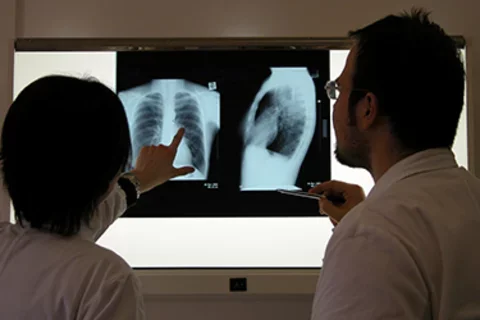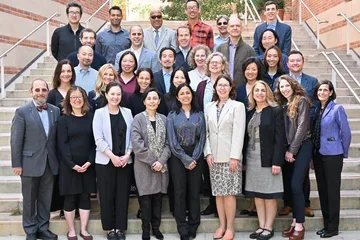Medical Licensure for Residents
What You Need to Know for Residency

Some Notes on Certifications From Dr. Kim Crooks, Director of the DGSOM Student Affairs Office
Medical licensure isn't the first thing that comes to mind for newly enrolled medical students thinking about finishing their formal education. Most daydream about successfully completing four years of classes and training and adding the MD degree after their name. But the next phase of medical training requires certifications to practice, one of which is medical licensure.
When Does the Licensing Process Begin?
Before medical students graduate, their next career step is top of mind — traditionally a one-year internship to open up the first year of residency training. "Interns are required to complete 12 months of post-MD training prior to applying for their medical licensure," says Dr. Kim Crooks, PhD, director of the student affairs office in the David Geffen School of Medicine at UCLA. The internship is that training, and the licensing process must be completed by the end of the second year.
"At UCLA, unlicensed trainees are not permitted to continue residency training in their third year without a license," Dr. Crooks adds. "This is likely to be similar nationwide."
What Is the USMLE?
The United States Medical Licensing Examination (USMLE) is a three-step licensing exam process sponsored by the Federation of State Medical Boards and the National Board of Medical Examiners. Medical students complete the first two (of three) steps during medical school:
- Step one is usually before the majority of clinical rotations begin.
- Step two is usually required to attain the medical degree. It includes Clinical Knowledge, a computer-based multiple choice exam; and Clinical Skills, a case-based assessment using 12 standardized patient cases.
- The third step is a two-day examination during one of the first two years of residency. It consists of a multiple-choice exam and 13 computer-based case simulations.
How Does Medical Licensure Work in California?
California requires a Medical Board of California license before starting the third year of residency. During the second year, residents provide certification of their medical degree, show successful passage of USMLE parts one and two and provide documentation verifying they've completed their internship.
Is There Medical Licensing Reciprocity Between States?
Each state has its own procedures governed by its medical board, according to Dr. Crooks, though licensure is required by the state in which you practice. Therefore, you'll need to obtain a license during residency for that state, and if you pursue a fellowship or advanced training elsewhere after residency, you'll need licensing in the new state as well. The same is true for subsequent employment. "These processes are rarely speedy and require advance planning," Dr. Crooks clarifies. "The intent is to ensure that all practitioners are qualified and offer safeguards to avoid unsafe practitioners."
California does not allow license reciprocity, and there's generally limited reciprocity between states because the process is regulated by state medical boards rather than a federal entity. Some states may have requirements beyond the USMLE or board certification, including exams.



